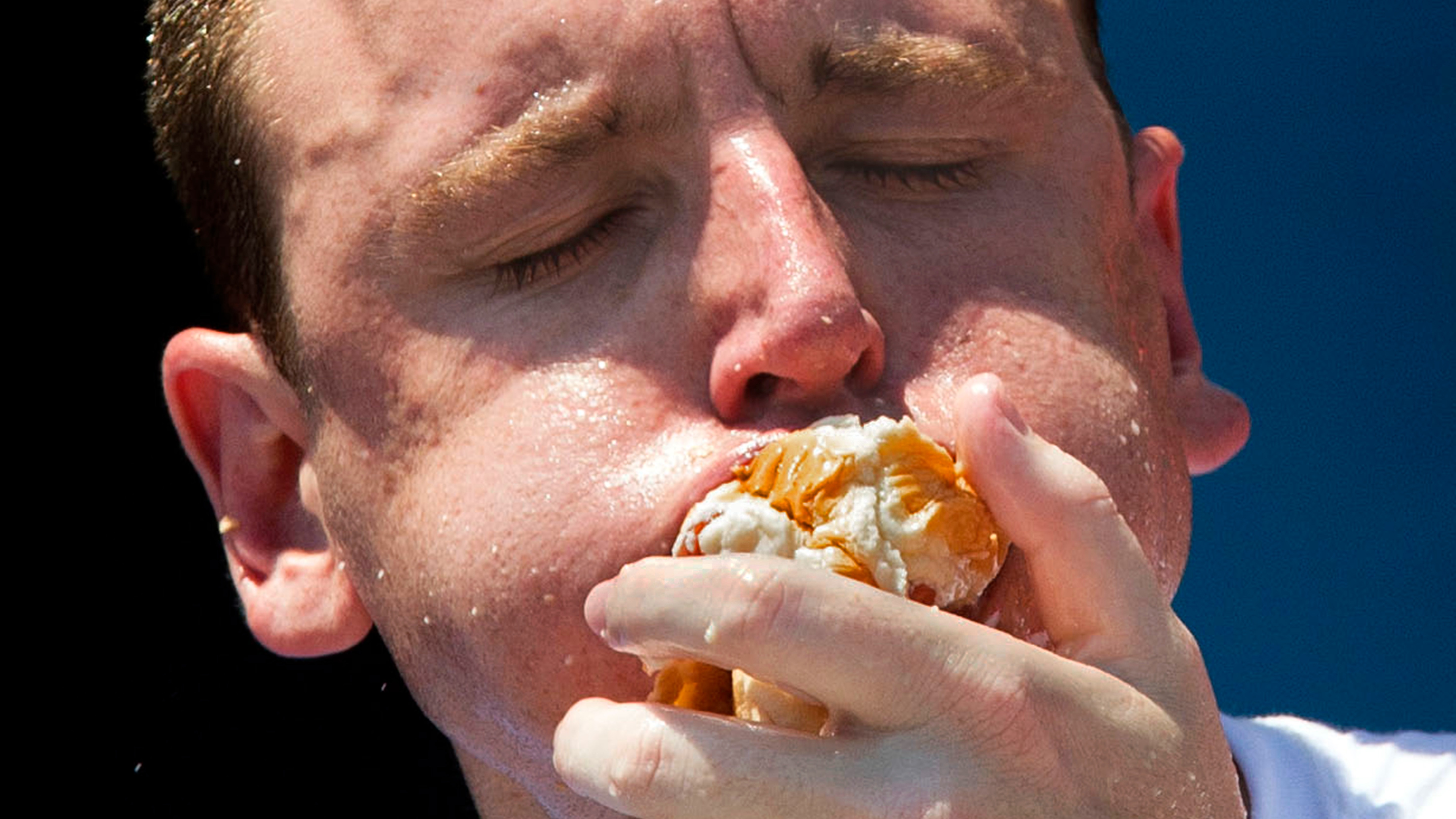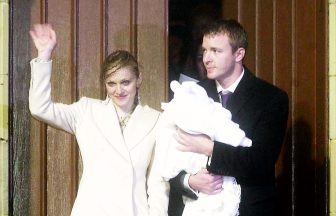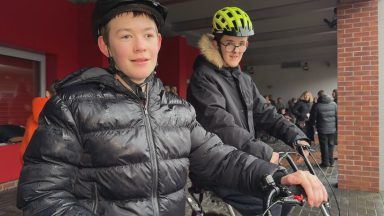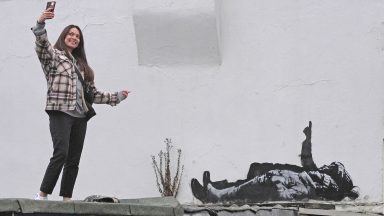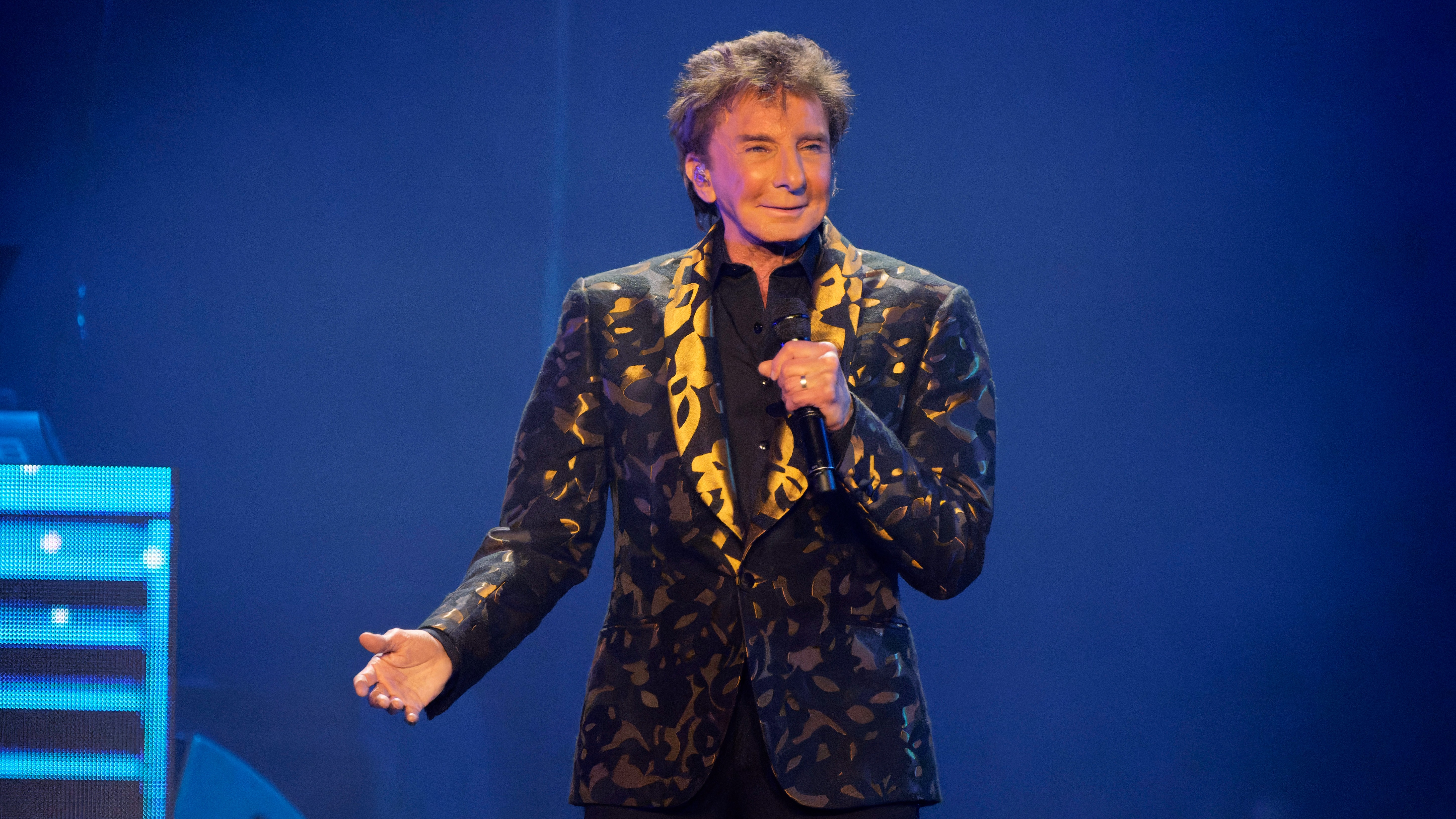Words by ITV News Producer, Kieran Carter
The Fourth of July, Independence Day, is a time for Americans to celebrate their history while embracing time-honoured traditions.
In a culture that often champions the idea that “more is more,” few spectacles embody that spirit quite like competitive eating. In this uniquely American sport, contestants from all walks of life push their bodies to the limit, consuming as much food as possible in a matter of minutes.
The largest and most prestigious of these events is the iconic July 4 hot dog eating contest at Coney Island, New York, which draws thousands of spectators in person and captivates millions more on ESPN.
To some, it is a gluttonous symbol of American excess; to others, a traditional test of endurance, attracting elite athletes from around the world like any other international sporting contest.
One thing is certain – if crowds and viewing figures are any indication, they’ve never been more popular.
The world record holder, Joey Chestnut, competing in Nathan’s Hot Dog Eating Contest in 2023.
Video: MLE
The controversy surrounding an American hero
Like any major sport, competitive eating has its own ruling body, Major League Eating (MLE), describing itself as “the governing body of all stomach-centric sport”.
MLE officiates competitive eating contests around the world and maintains a global league table of professional eaters.
Sitting comfortably at the top is Joey Chestnut, who, after a career spanning decades, remains the favourite in the majority of tournaments he competes in.
Chestnut’s reign has not been without controversy. Last year, the reigning hot dog champ was banned from competing in the July 4 contest after signing a sponsorship deal with a rival vegan hot dog company.
After Chestnut’s previous 16 wins, MLE, barred him from competing, saying it was “devastated” to have to make the call.
“We are devastated to learn that Joey Chestnut has chosen to represent a rival brand that sells plant-based hot dogs rather than competing in the 2024 Nathan’s Famous Fourth of July Hot Dog Eating Contest,” MLE wrote at the time.
“Joey Chestnut is an American hero. We would love nothing more than to have him at the Nathan’s Famous International Hot Dog Eating Contest,” the statement continued.
“We hope he returns when he is not representing a rival brand.”
But this year, fan favourite Joey Chestnut will make a triumphant return to the July 4 contest after apparently resolving the contractual issues keeping him away from the dining table last year.
Announcing his return on X, Chestnut said he was thrilled.
“This event means the world to me. It’s a cherished tradition, a celebration of American culture, and a huge part of my life,” Chestnut said.
“While I have and continue to partner with a variety of companies, including some in the plant-based space, those relationships were never a conflict with my love for hot dogs.
“To be clear: Nathan’s is the only hot dog company I’ve ever worked with.
“I respect that there were differences in interpretation, but I’m grateful we’ve been able to find common ground. I’m excited to be back on the Coney Island stage, doing what I live to do, and celebrating the Fourth of July with hot dogs in my hands!
“Stay hungry,” he finished.
Chestnut didn’t go hungry in 2024, however, in the absence of officially competing, he took part in a rival Netflix contest held on the same day against an old rival, Takeru Kobayashi.
In “Chestnut vs. Kobayashi: Unfinished Beef,” Joey Chestnut beat his previous record, consuming 83 hot dogs in ten minutes during the live-streamed Netflix special.
The event held a special significance for fans of the sport as Kobayashi had announced his retirement earlier that year, telling a Netflix documentary: “I no longer feel hunger.”
Legends and methods
Nathan’s July 4 Hot Dog Eating Contest claims to have been running for more than 100 years. Legend has it that the event was first held in 1916 when four immigrants competed to eat the most hot dogs to decide who was the most patriotic.
But promoters of the contest have since admitted fabricating this history, with the first documented contest taking place on June 30 1967.
Since 2003 the contest has been shown on ESPN, regularly attracting viewing figures of more than a million.
Competition rules vary with some, like Nathan’s, allowing “dunking,” a method which involves soaking the hot dog buns in water as you eat them to make swallowing easier.
In almost all tournaments, any sign of vomiting, also known as a “roman method incident” or “reversal of fortune,” can result in disqualification.
Training methods among competitive eaters vary widely. Some competitors report drinking large volumes of water in the lead-up to events to stretch their stomachs, while others swear by chewing excessive amounts of gum to build jaw strength. Chestnut has previously claimed that he begins training months in advance for major competitions, such as Friday’s hot dog eating contest.
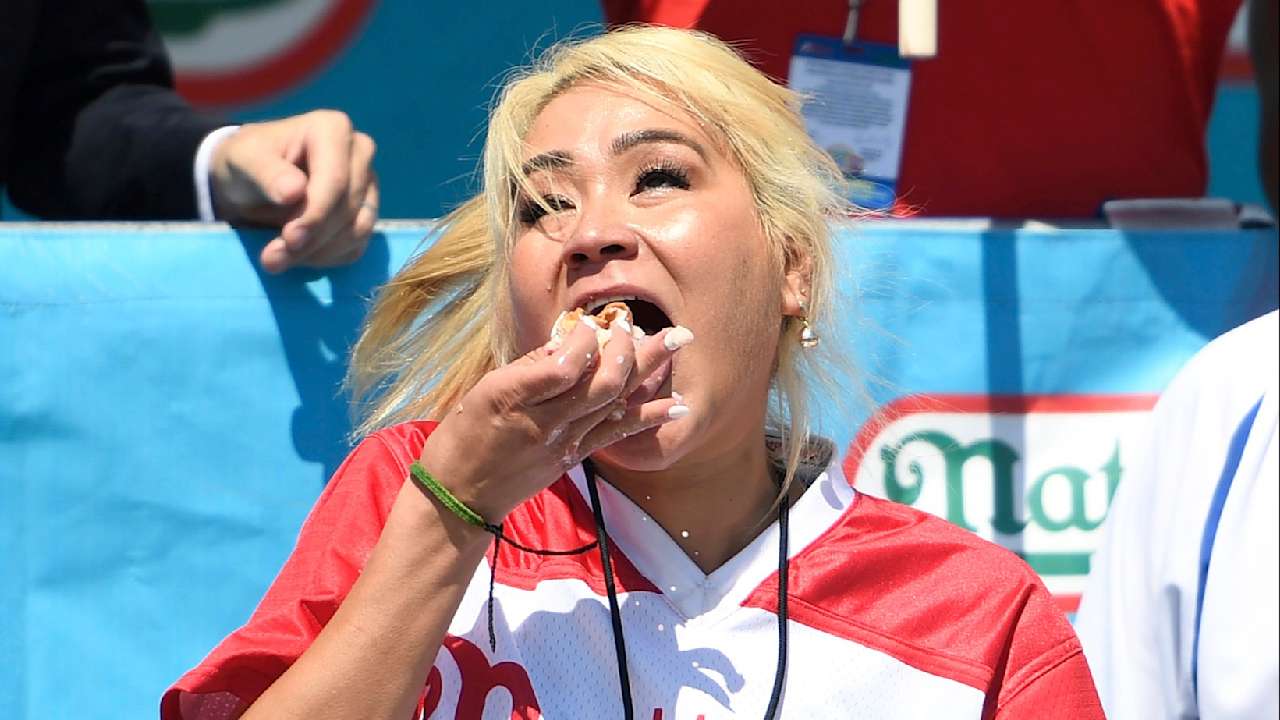
The type of competitors MLE events attract describe themselves as physically fit and athletic.
Looking back at the history of its events Rich Shea, who co-founded MLE with his brother George Shea, told ITV News: “In around 2006 and 2007 we witnessed a shift in the type of person competing in MLE events. While we had seen large, buffet buster types, we were seeing more traditional athletes. Fit men and women who were marathon runners, triathletes, or those who excelled at traditional sports in high school and university.
“Like any sport, competitive eating takes discipline. MLE competitors watch film of their performances and those of their competitors, they stay fit, they attend a number of events across various food disciplines every year.”
“Competitive eating is a sport and as inherent to man as running, jumping or swimming – all things you see in the Olympics. In fact, I say it’s the most inherent sport known to man. You can imagine 30,000 years ago in cave in Eastern Europe, a bunch of hungry neanderthals standing around and a rabbit walks in – that’s competitive eating.”
There’s a good cause behind the spectacle too, with contests regularly donating food to charities and competitors often fundraising alongside competing.
This year, the contest is donating 100,000 hot dogs to Food Bank for NYC, bringing their total frankfurter donations close to two million.

It’s not just hot dogs either: MLE oversees numerous challenges with food from all corners of the competitive dinner table.
Rich Shea told ITV News: “Major League Eating is always adding new contests around the US and beyond.
“We do all variety of foods and have found that the presentation of our events, a mix of over the top pageantry coupled with a display of incredible physical skill, is a winning formula.
“That said, regional foods are often a fan favorite – Buffalo Wings in Buffalo, New York, Crawfish in New Orleans, Louisiana, Pulled Pork in Memphis, Tennessee, Lobster in Maine, Wontons in Bangkok.”
Competitors aren’t precious about specific food disciplines either, with the highest ranked competitive eaters frequently competing in tournaments involving a whole range of different foods.
Joey Chestnut currently holds records in 56 distinct foods, ranging from boysonberry pies (6.6kg in eight minutes), to shrimp wontons (390 in eight minutes), as well as 83 hot dogs in ten minutes during the unsanctioned Netflix event.
‘Great eater of Kent’
MLE hosts contests around the world, though not everywhere shares the same level of enthusiasm.
In 2021, China passed a law banning competitive eating over concerns that it glorified gluttony and food waste.
As far as the UK is concerned, the competitive eating scene exists but to date Brits have shown far less appetite for it.
Various restaurants hold individual food challenges and a handful of competitive events put on across the country, with the British Eating League hosting their own hot dog contest this Friday at a London restaurant.

Historically, though, one of the first recorded professional competitive eaters hailed from the UK.
Nicholas Wood, born in 1585 and known as “the great eater of Kent,” took bets on how much food he could consume and was hailed for his gastronomic prowess.
It is reported his exploits included eating, “a whole sheep raw in one sitting,” and, as reported by poet John Taylor: “60 eggs, a good portion of lamb and a handful of pies – a meal that left him hungry for more.”
Like any sport, standards progress, and around four centuries later, the hardboiled egg record currently stands at over twice Wood’s count – 141 in eight minutes.
The record holder – none other than Joey Chestnut.
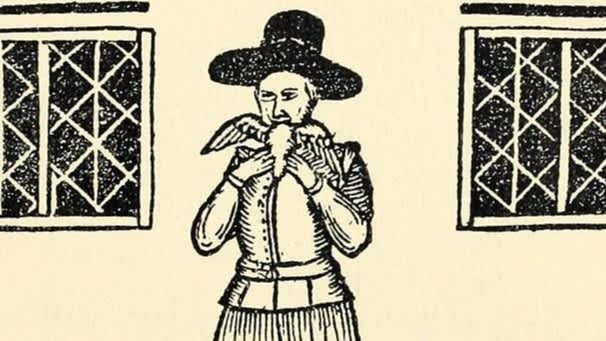
How safe is extreme eating?
Professor and GP, Abbas Tejani, told ITV News there are definite risks.
“Consuming extreme amounts of food – sometimes up to 22,000 calories in ten minutes – puts the body under significant physiological stress. The human stomach is surprisingly elastic and can stretch to accommodate several litres of food, but this isn’t without risk.”
Prof Tejani warned: “Digestively, the body is overwhelmed. Blood flow is redirected from other organs to the gastrointestinal tract, which can result in light-headedness or even fainting. There’s also a massive insulin surge to manage the sudden spike in blood glucose, which can lead to a ‘sugar crash’ a short while later, with symptoms like fatigue, shakiness, and confusion.
“Repeated episodes of binge eating like this can increase the risk of long-term metabolic conditions, including insulin resistance, type two diabetes, and fatty liver disease.
“The body is remarkably adaptable, but competitive eating pushes it far beyond its natural limits and can carry serious short- and long-term health consequences,” he concluded.
Notably, there have been a handful of deaths during professional contests, although the majority of these occurred from choking.
Due to the risks, MLE “strongly opposes and discourages home training of any kind,” as well as advising younger people not to eat “for speed or quantity under any circumstances”.
They warn aspiring competitors to stick to formally sanctioned events, saying: “Do not try speed eating home.”
Follow STV News on WhatsApp
Scan the QR code on your mobile device for all the latest news from around the country


